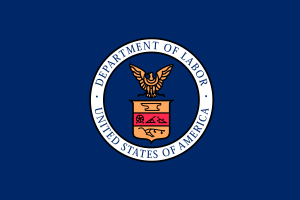Overtime pay regulations will change Dec. 1 for the first time in 12 years, doubling the salary threshold to qualify for time-and-a-half pay.
The U.S. Department of Labor (DOL) yesterday announced the revised regulations, which boost the salary threshold for the overtime exemption from $23,600 annually, or $455 per week, to $47,476 annually, $913 per week. DOL proposed changes last summer, including a threshold of $50,440, and accepted some 270,000 public comments. It’s expected to impact some 4.2 million workers who are not currently eligible for overtime.
The threshold had not been changed since 2004. It’s based on the 40th percentile of weekly earnings of full-time salaried workers in the lowest wage Census region – currently the South.
Workers earning above the threshold are still subject to the “duties test” while for the first time bonuses and incentive payments may count toward up to 10 percent of the new salary level.
The final rule will automatically update the threshold every three years, based on wage growth over time. The threshold could eclipse $51,000 with the first update on Jan. 1, 2020.
The updates also raise the “highly compensated employee” threshold from $100,000 to $134,004, above which a minimum showing is needed to demonstrate an employee is not eligible for overtime.
The overtime rule updates the salary level required for the executive, administrative, and professional exemption to the Fair Labor Standards Act (FLSA). Overtime regulations apply to businesses with annual sales or business of at least $500,000 and those covered by the FLSA.
For nonprofits, the measure applies to activities performed for a business purpose, such as a gift shop but does not apply to the charitable activities that are not “insubstantial competition with other business.” Income from contributions, membership fees, dues and donations used for charitable activities are not counted toward the $500,000 threshold.
Among nonprofits covered by FLSA are hospitals, schools and preschools, government agencies and business providing medical or nursing care for residents.
Under FSLA, employees are entitled to wages at or above the federal minimum wage and must be paid time-and-a-half overtime for work beyond a 40-hour workweek, with the exception of white-collar workers, such as executive, administrative, and professional employees.
“This policy just hasn’t kept up with the times,” President Barack Obama said via a statement announcing the updates. Some 7 percent of workers qualify for overtime pay based on their salaries, according to the statement.
In response to the new overtime rules, DOL said employers can pay time-and-a-half for overtime work; raise workers’ salaries above the new threshold; limit workers’ hours to 40 per week; or some combination of the three.
The revised regulations would affect 4.2 million workers in the country, according to the DOL, with a breakdown by state:
- • California, 392,000
- • Texas, 370,000
- • Florida, 331,000
- • New York, 278,000
- • Illinois, 194,000
- • Pennsylvania, 185,000
The National Retail Federation (NRF) called the new rules a “career killer,” claiming that the Labor Department “is demoting millions of workers” with the stroke of a pen. “These regulations are full of false promises,” David French, senior vice president for government relations, said via a statement. “Most of the people impacted by this change will not see any additional pay. Instead, this sudden and extraordinary increase will mean more red tape and fewer advancement opportunities for salaried professionals,” he said.
“Overtime regulations need to be sensitive to cost-of-living differences throughout the country, moderate enough that they don’t block the career ambitions of young people and middle managers working to climb the career ladder, and gradual enough that business owners can implement them without penalizing the very people they were intended to help,” French said.












